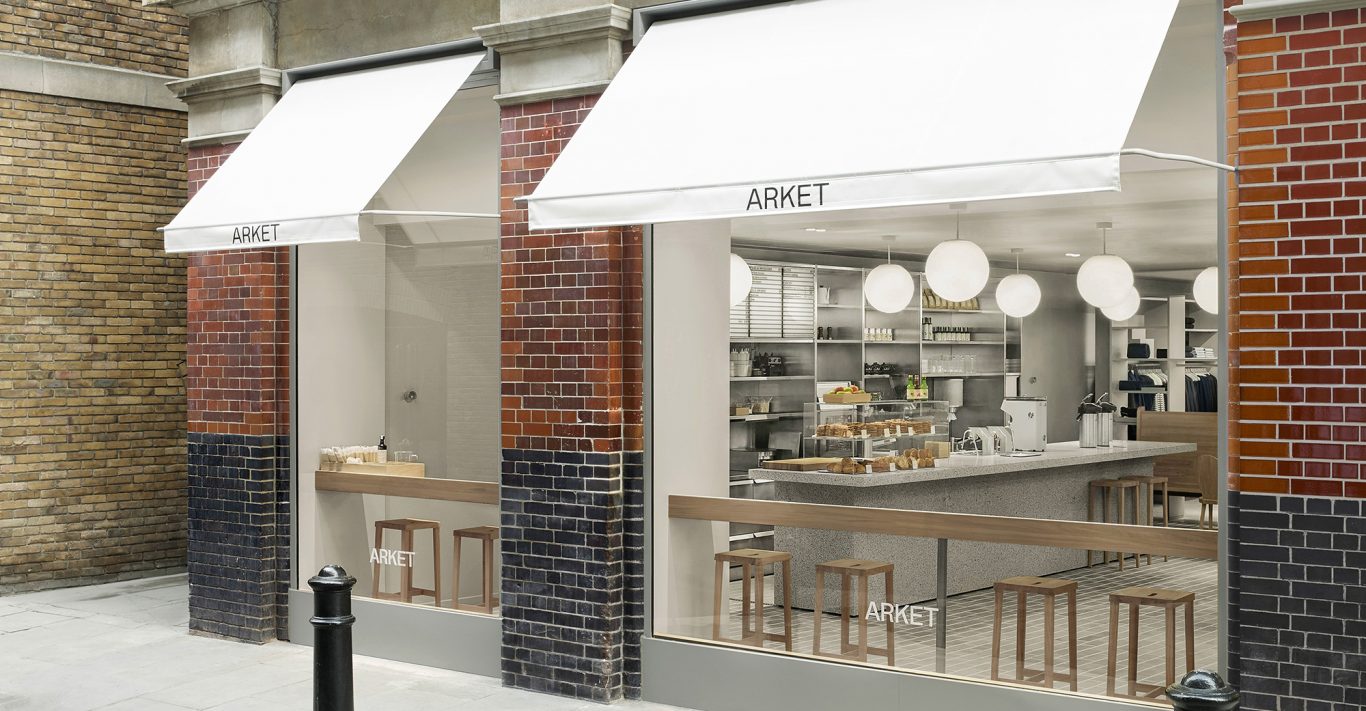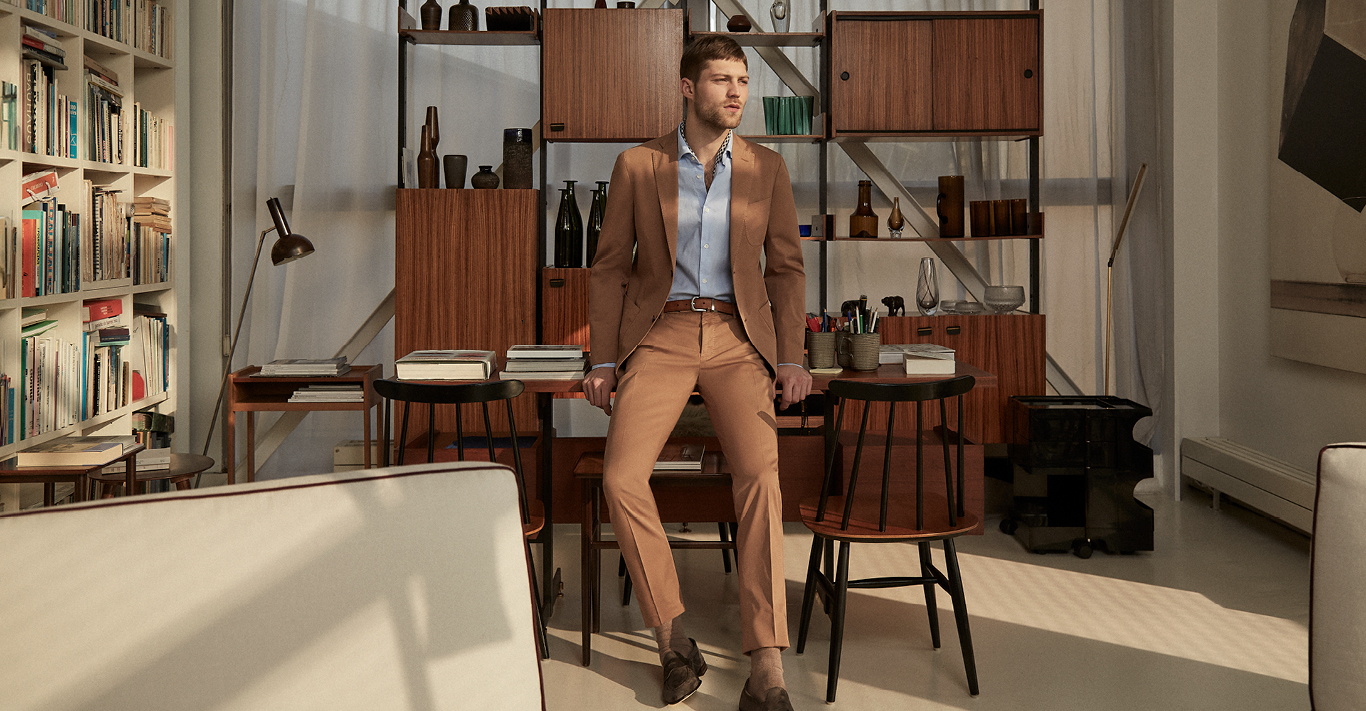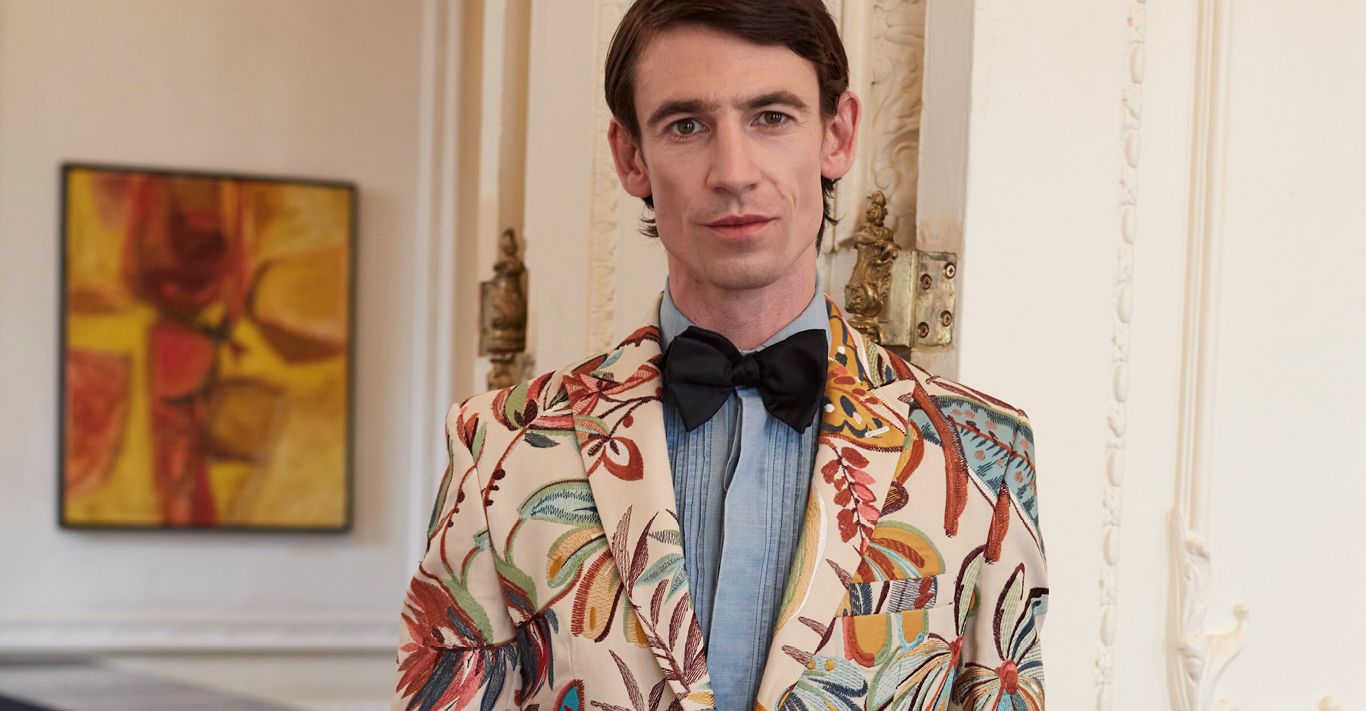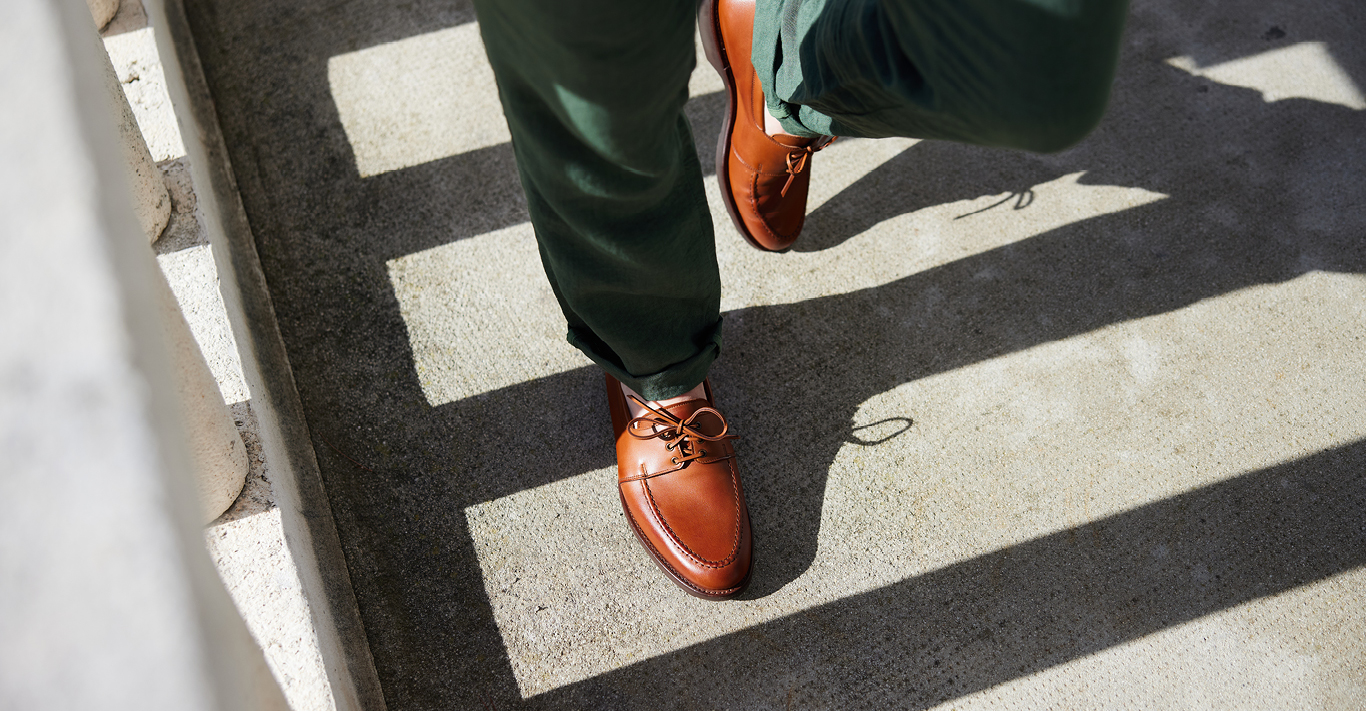WORDS
Peter Howarth
Jesper Borjesson is 42, Swedish and bearded. He speaks impeccable English with a slight accent that is difficult to place – as do so many Scandinavians – which gives him the air of an intelligent and cultured conversationalist. Which he turns out to be.
We meet in the café at the Arket store in London’s Covent Garden, which opened last September, a bright and elegant place, unpretentious and well designed, which is fitting, as the collection that Borjesson oversees could be described in exactly those terms. (Arket does offer both menswear and womenswear, plus childrenswear, bath and body products and homeware – but it is menswear that my host is responsible for.)
He explains that he has been at Arket since day one, when he was given the task of creating a brand-new menswear collection for the H&M group. From October 2014 to January 2015 he was literally on his own, waiting for his colleagues to start. ‘I was alone in a big office with 16 desks in Stockholm,’ he explains. Apart from a computer, the only other things he had to keep him company were the vintage pieces of clothing he began collecting.
‘I started to build up an archive, because if you think about it, especially in menswear, where do you start from? So, it was like going back to see what the reference was for every item you see in a contemporary wardrobe. Since we had nothing, and “arket” means “blank sheet of paper” in Swedish, there was just a rack of bad-smelling vintage clothes and me.’
His hunting ground for these pieces was London, where he picked out examples he liked of men’s classics – trench coats, blazers and other, more unconventional items. ‘Even a bulletproof vest, actually. That later become a beautiful layering piece,’ he says.
One day the CEO of the H&M group came by to say hello and ask how it was going. ‘There was just this smell of old clothes and this bullet proof vest in there, and I said “Yeah, I’m just starting to create a foundation for this new lifestyle brand.”’ Borjesson doesn’t say how his boss reacted, but if he wasn’t impressed then, he will be now. Because here we are, some three-and-a-half years later, in one of three Arket stores in London (the first to open in the world was launched last year on Regent Street), and the place is buzzing and full of beautifully designed pieces with a minimal aesthetic and an affordable price point.
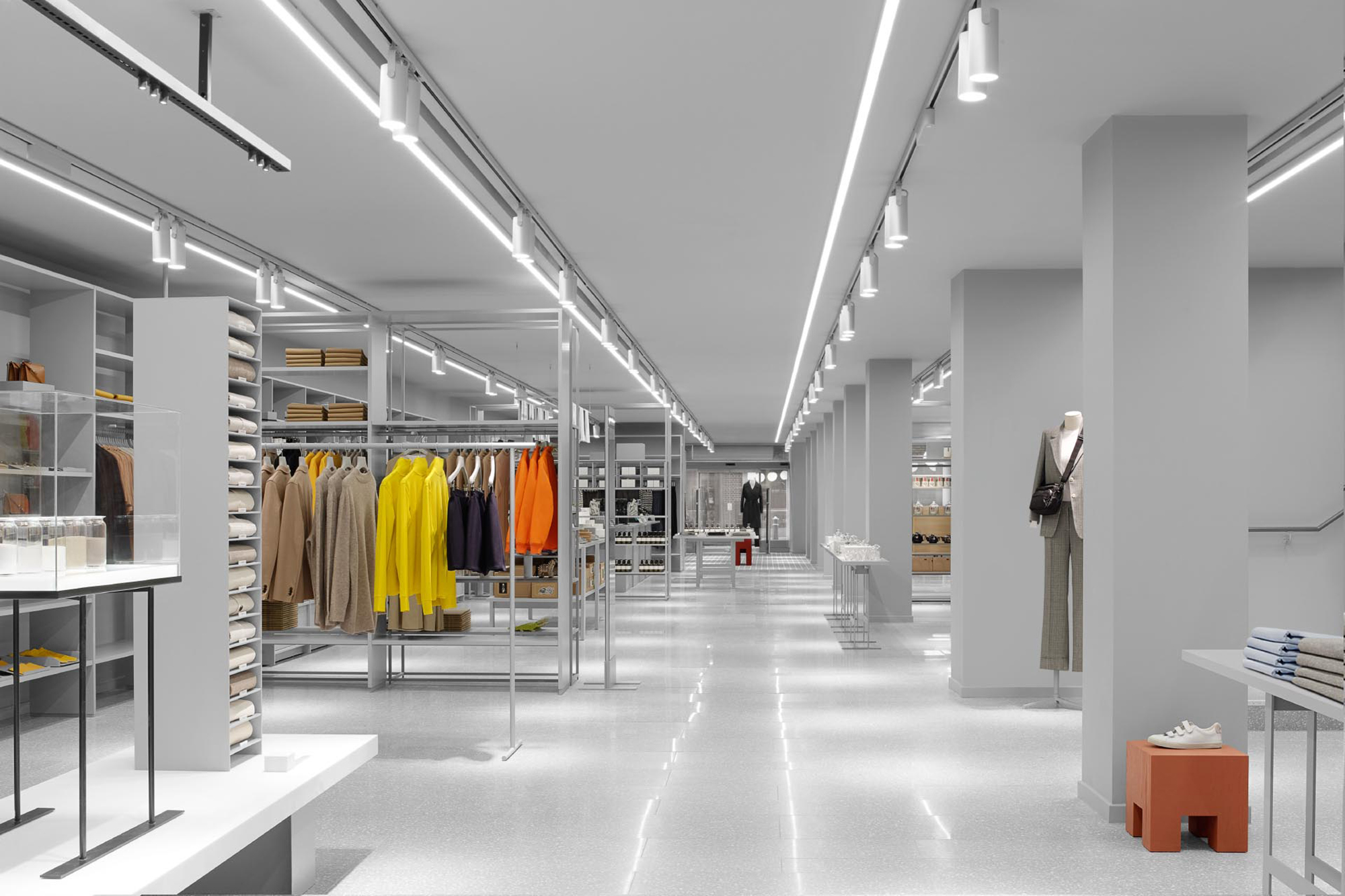
‘We talked a lot about archetypes of clothing,’ says Borjesson, ‘and about markets: what does a market mean in today’s world? So, there’s a connection between Arket and archetypes and the archive.’ In fact, though “arket” does indeed mean “blank sheet of paper” in his native tongue, the brand’s official line is that it is a ‘modern-day market’. Thus, the team, which includes managing director Lars Axelsson and creative director Ulrika Bernhardtz, also looked beyond fashion to what was happening in other areas – especially food. ‘We came back to London a few times and realised that the food industry is much more interesting to look at compared to fashion retail. Much more is happening there, the sustainability aspect of local food is important, and there is a new way of communicating about it too.’ Borjesson warms to his theme: ‘I have a metaphor: take good ingredients and let them simmer – it is really like that when you make clothes; it’s the same thing. You need the right ingredients and the longer you have to let it simmer, the better it will be. It’s a very similar approach for us – how we create a lot of our items. It wasn’t so much about making loads of new products; we just re-did the same item again, and again and again.’
You can see this in the store, where a small number of different styles are rendered in a large number of different fabrics and colours, and displayed in colour-co-ordinated blocks, known to Arket as ‘Colour Families’. The look is ordered and logical, and Borjesson sounds more like an engineer or scientist than a fashion designer as he describes how his team works, creating a jersey from a certain fibre to get a particular weight or quality, something the firm calls the ‘GSM Programme’: ‘With T-shirts, for example, we thought, “Wait, so the 150g T-shirt is more like an underwear quality and 170g per square metre is like a standard T-shirt weight, and 220g is more like what you find in sportswear. So, from the same source you can make a lot of different executions, and that is the philosophy we have for making many different products.’
He explains that this approach can be rolled out across lots of materials; Arket has, for example, its ‘Merino Yarn Project’: ‘We have an organic merino and sometimes we make a 100% merino piece or sometimes you want a merino mix or whatever, so it’s from the same source but makes many different things.’
So Arket will develop a few jacket styles it likes and then replicate them in different fabrics and colours. The same for knits, shirts, coats, even accessories. ‘For trousers it’s three silhouettes, regardless of the materials, those are our three silhouettes,’ he explains. And, apparently, he is determined to narrow the offer down even more, learning from what works, so that the customer is always given a very clear message. Key pieces might recur, too, solving that infuriating situation when your favourite item is lost, damaged or falls apart and you find it is no longer made.
‘What’s the ultimate wardrobe for different occasions?’ he asks. ‘So, we have the tailoring department; and we have what we call the utility uniform, which is more work-wear inspired, like shirt jackets; and we have icons like the Oxford shirt… And we’re constantly trying to refine and refine rather than create totally new things.’
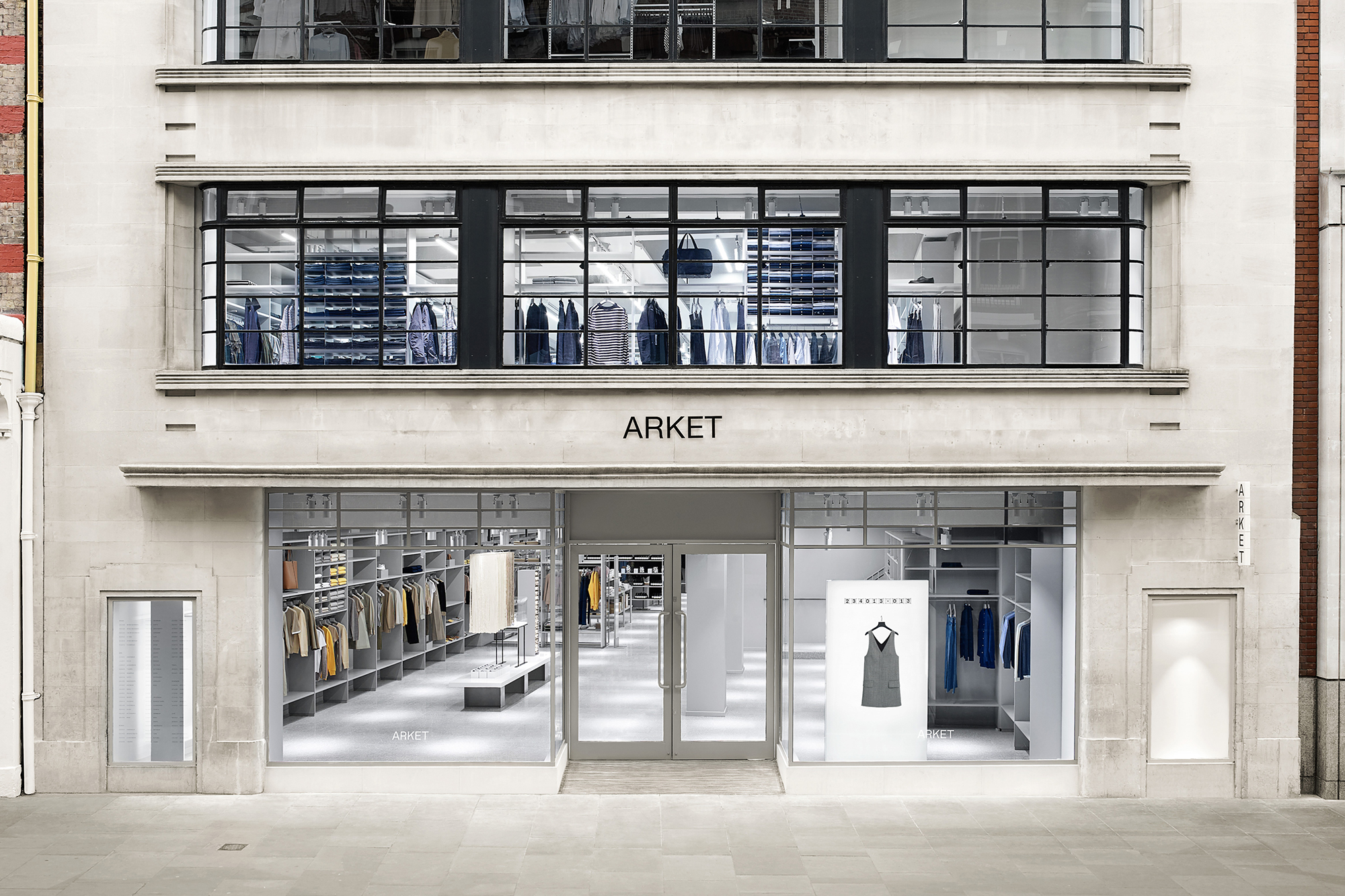
There are of course what he calls ‘seasonal injections’, but he starts by introducing new colours and materials to those pieces that have been tried and tested and which therefore get carried over. ‘What we realised is that we’ve had the luxury of working on a few things for quite a long time, and that’s when we’re most happy with the items. But it’s also challenging to say no, we won’t change it yet – for one more year or one more season – and keep calm and trust our instincts. Usually, if we feel that way about something it is a sign that it is not going to be a short-lived product; because if we still like it after two years, the customer will like it for two, three, four years afterwards, hopefully.’
Borjesson says that Arket opened its first store in London because he likes the British lifestyle, the city has buildings of the size that he was after, and it is ‘the centre of the whole of Europe’. Of course, the decision to create an Arket environment was also an opportunity to express the philosophy behind the brand. If the products are highly curated, then surely the store should reflect that approach… and apply it to life in general.
‘We were talking about what you enjoy doing socially? Like, where do you hang out at parties? You may hang out in the kitchen. And then you think about what is missing when you walk around the busiest streets in London – like you may want to get a drink or you may want to sit down or relax a bit in very hectic areas.’ He liked the fact that in Japan some stores have big plants to introduce greenery, and also sell flowers. He wanted to offer customers the opportunity to re-charge and have a coffee. ‘Maybe you are shopping with family and not all members want to browse. They can sit down; enjoy a meal or coffee or whatever.’
So, you can get great coffee and simple dishes at the Arket cafés, where the menu, conceived by head chef Martin Berg, follows the New Nordic Manifesto for food.ut if your party does decide to browse, they will also find things on sale other than clothes, which loosely fall into the category of ‘homeware’. From beauty and grooming products to literature (Penguin Classics no less), via kitchen implements, vases, terracotta flower pots, cushions, blankets, scented candles, crockery, hurricane lamps, napkin rings, teddy bears, tablecloths and so much more. Borjesson laughs as he reveals that one of the store’s best-sellers is a Norwegian cheese slicer – a beautifully simple, functional piece of design made by Bjørklund, who invented the item in 1925. ‘We’re very much connected to lifestyle roots and what you enjoy – are clothes the only thing in life today that is relevant?’
This focus on the domestic is surely a little Scandinavian; we’ve all heard of the Danish “hygge” trend of cosying-up, in the moment. But Borjesson has a point. Trends operate in pendulum swings and he sees the hubbub of the modern, digital world as making people more aware of creature comforts: ‘I feel like people are getting more domestic – you want to get nice things for your house, you want to cook more.’ In fact, Arket offers recipe cards for you to take home with you from its cafés, created by Berg.
So Arket will continue to explore whether it can sell a mix of objects that fit into its minimal design-led aesthetic. ‘We will increase all the other stuff and direct it to men – like domestic gadgets. I think you should enjoy being in the shop, and if you want to be a part of that, then it is more a social thing.’
He believes too that where you shop and what you buy says something about your values and the beliefs that you hold. In this context, he is excited by Arket’s growth. ‘It’s great now that we are getting bigger and bigger as we can start to challenge suppliers that aren’t using recycled materials; we can start to challenge them to do things in our way, and that’s when it becomes really interesting. Like we’ve started to introduce organic cotton in our denim, and it’s exactly the same trouser, just a little bit better for the environment. It has the same durability and we don’t change the designs, we just improve the quality.’
And, so, to the clothes. My favourite is a hopsack wool navy blue suit, which works well with shorts or T-shirts, and with leather Chelsea boots or trainers (all available from Arket). Borjesson points me towards certain pieces. ‘I think there are a few items that kind of grew on us that we’ve had since the beginning, like our pyjama-striped shirts that you can wear in so many different ways.’ A new favourite for him are the various styles of shorts; there are three types (tailored, chino and utilitarian) with different lengths.
‘I’ve never been a chino guy,’ says the designer, ‘but I’m actually wearing a lot of chinos right now. Since a year ago, they’ve become so good. I think I’ve just never found the right fit and I’ve never felt contemporary wearing them.’ So, he designed some pairs he would feel comfortable in, and they have become his go-to trouser of choice. ‘There’s some sort of sophistication in them now, I would say – these trousers are my favourite. There’s a standard chino and then a workwear-inspired type, and those are the ones that I wear day in and day out.’ He also flags the ‘2-in-1Series’: ‘Two-in-one outerwear, which is like a detachable liner – it’s really cool’. These pieces – a liner bomber jacket and liner waistcoat in a nylon fabric from Japan – can connect with other jackets and coats. ‘I also really like the T-shirts, because we developed the fabric ourselves.’
Arket is now in London (in Regent Street, Covent Garden and Westfield, Stratford), at Bluewater in Kent, and will open in Liverpool later this month. It is also being rolled out across Europe. But, for a while at least, it is still something of a well-kept secret. Go and check it out online or, even better, in store. And why not pick up a cheese slicer while you’re at it?

